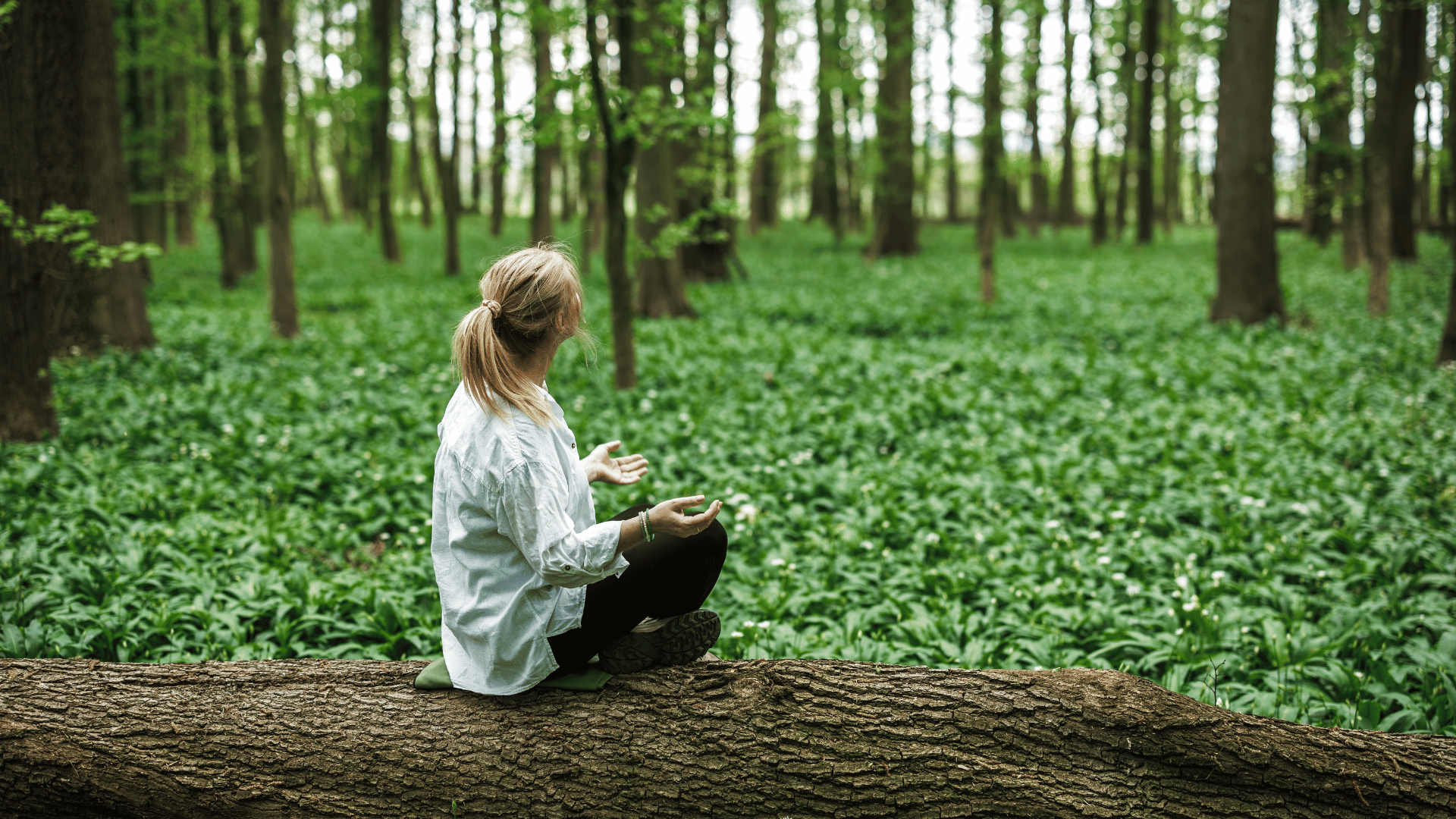The act of spending time in the forest is what the Japanese call shinrin-yoku, a term originating in the 1980s that means “forest bathing.” In previous studies, this practice has been shown to boost the immune system, lower blood pressure, help alleviate depression, reduce the stress hormones cortisol and adrenaline, and decrease the body’s fight-or-flight response. Here’s a step-by-step guide on how to maximize the health benefits of your forest bathing experience.
Set Aside Time

To achieve the full benefits of shinrin-yoku, plan to spend approximately two to six hours in the woods. According to Qing Li, a researcher on this topic and a professor at Nippon Medical School in Tokyo, forest bathing for this length of time helps boost immunity.
One study found that participants who walked in the forest for two hours in the morning and two hours in the afternoon saw an increase in anti-cancer proteins and immune cells that kill tumors, with the effects lasting for at least seven days after. Though you’ll see more benefits the longer you spend in the forest, short walks can also be beneficial. For example, a 2019 study published in the International Journal of Environmental Research and Public Health found that walking just 15 minutes through the woods can help relieve stress and anxiety.
Find a Location Surrounded by Trees

Locating a nearby forest is ideal to achieve maximum health benefits from this practice. If, however, you’re a city dweller, you can still achieve positive effects as long as you’re in an area with plenty of trees.
According to a 2022 study published in the International Journal of Environmental Research and Public Health, walking in a forest park had a greater impact on cardiovascular function than doing so in an urban park. Another study published in 2022, however, found that urban parks can significantly improve mood and reduce stress, compared to walking in an urban gray setting.
Focus on the Sensations of the Forest

According to Li, the benefits of shinrin-yoku come from inhaling chemicals called phytoncides, which are released into the air by trees. These chemicals can reduce our stress hormones and increase our levels of white blood cells.
In addition to breathing deeply, focus on the rest of the sensations in regards to the natural surroundings to ground yourself. For example, touch the bark of a tree or listen to the leaves crunch beneath your feet as you walk. Focus on calming your nervous system and reducing your heart rate by walking slowly or sitting.
Incorporate Mindful Practices

Forest bathing effects can be boosted by incorporating mindful practices such as yoga, tai chi, or meditation. Walk through the forest and find a spot that resonates with you, whether it fills you with a sense of awe or you simply find the spot to be particularly quiet and peaceful.
Gary Evans, director of the Forest Bathing Institute in the U.K., suggests trying this exercise: “Inhale for a count of one, two and then exhale for double the length of time, so it’s one, two, three, four. Then keep that going.”
“When the exhale is slower than the inhale, it sends a physiological message to your body that says: ‘I’m safe. I can relax. It’s OK,’” he adds.
Though this technique can also be beneficial outside of a forest environment, practicing it while forest bathing can help the body relax enough to truly notice all of the sights and sounds around you. And, according to Evans, tuning into the forest can have both physiological and emotional benefits.
“Depending on what’s happening in your emotional world, quite often when we look at nature or the forest, it sends something back to us to help us make sense of what’s going on in our life,” says Evans.
At-Home Practices

Although forest bathing primarily occurs within a forest environment, there are ways to bring an echo of its health benefits into your home. In one study from 2009, for example, Li’s team ordered special concentrated essential oils made from Japanese cypress trees and then pumped them into the hotel rooms of test subjects using a diffuser. The people staying in the rooms with tree-based essential oils experienced about 40 to 50% of the health benefits as those who participated in a forest bathing session.
You could also incorporate the Danish practice of hygge, which involves cultivating a cozy atmosphere that creates a sense of contentment. This practice, in part, integrates elements of nature to help create that sense of happiness. A wooden bookshelf, a stone table, houseplants, a fireplace with a roaring fire – each of these elements can connect us to nature indoors and, though it’s not as effective as spending hours in the forest, provide some of the beneficial effects.


